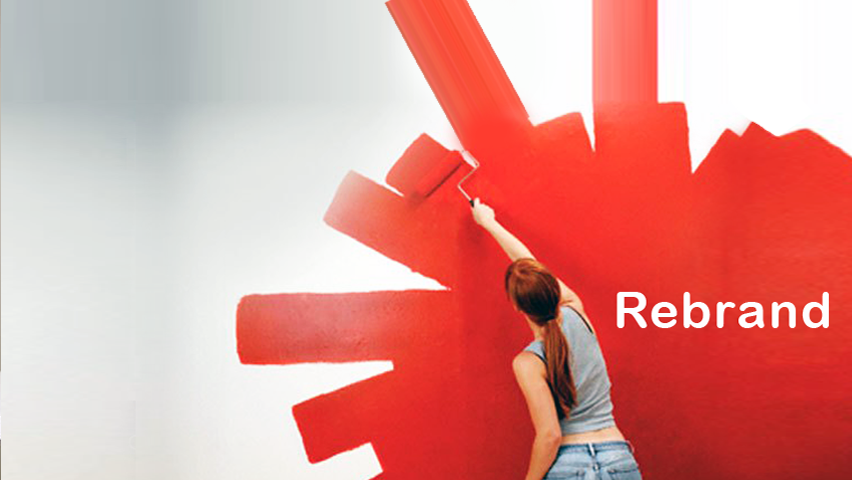‘A brand is the set of expectations, memories, stories and relationships that, taken together, account for a consumer’s decision to choose one product or service over another.’ Seth Godin
A brand strategy is so much more than a great logo. Put simply, it’s your customer’s perception of your business. A great brand is one of the most important aspects of any business, even if you’re an entrepreneur or small business, and building a brand properly is worth doing. It is going to need the 3C’s:
- Consistency
- Communication
- Connectivity – so your brand’s message meshes seamlessly – value, personality and distinction
If you are an entrepreneur and are looking to build your personal brand, all of these steps will be exactly the same.
Brand Strategy and Development includes:
- Your brand strategy which will be aligned to your business objectives
- Your brand Identity – development of what you need to support and represent your brand like logo, tagline, colours, website etc.
- Then your brand Message – getting your brand out and developing it.
Here is what you need to do if you’re getting your brand started:
1. Business Strategy
Before you develop your brand strategy, start with a clear understanding of your business and business goals. What is your business’s mission; what products or services do you offer; if you already have customers what do they think of your business; what qualities do you want them to associate with your business.
2. Target Audience
Do some research to work out who your ideal customer or target audience is and the more you niche it down the better and more effective your brand message will be. The narrower the focus, the faster growth. Do some research on your buyer persona or avatar and read about How to Identify Your Ideal Client or Avatar here.

Once you have worked out who your avatar is you will be able to anticipate their needs and put your message in language that resonates with them. Once you have brand loyalty, you may be able to expand your reach.
3. Brand or Market Positioning
Your brand strategy includes your market position. You need to work out how you differ to all the other businesses or entrepreneurs out there offering similar to you. Why will your target audience choose to work with you? You could put together no more than 5 reasons and they can be a mix of practical and ideal. Research your competition thoroughly and work out what they are doing well and what they’re not. You need to position yourself to stand out so don’t just copy someone else. You and your business must be unique, be easily recognised and be memorable. This is about the value you add not the features of your services.
4. Brand Logo, Tagline
Most people want to start with the visuals like logo and colours first because this is the fun part. It pays to remember here that the logo and tagline are not your brand but the symbols that visually represent your brand, so the first 3 points need to be considered before you get to this stage in getting your brand started. Your logo should be designed with your brand in mind as well as your target audience. If you need help, to design a great logo, you can contact us.
5. Brand Voice
Create your ‘voice’ for your brand and then this will be applied across all your marketing. Should your brand be formal or friendly? Do you want it to be ‘out there’ and a bit ‘crazy’ or conservative? Is it professional and authoritative or conversational? Your brand voice needs to be consistently used everywhere you communicate including emails, website, brochures, social media etc. If you find your correct brand voice, then you have the best chance of connecting with your customers authentically. The language you use should make a direct connection with your ideal customer and if possible, touch an emotional chord.
This is the time to develop your elevator pitch – a brief, persuasive speech that you use to spark interest in what your business does. A good elevator pitch should last no longer than a short elevator ride of 20 to 30 seconds, hence the name.
6. Website & Marketing Strategy
Once voice, logo and colours and tagline are completed, you can start on your website which should be the basis of all your marketing. Your website is your single most important brand development tool within your brand strategy. It is the place where all your audiences turn to learn what you do, how you do it and who your clients are. Prospective clients are not likely to choose your business solely based on your website, but they may well rule you out if your site sends the wrong message. To know what to include in a Winning Website, click here.

Marketing strategy will cover your social media, advertising, SEO, content marketing, email marketing and user experience – everywhere you can amplify your brand, brand awareness and growth.
7. Implement Your Brand and Track
You would be surprised to hear that many people go to the trouble, and often at huge expense, of developing a brand strategy and never implement it! Maybe they just get too busy. So, get all your ducks in a row before you start your marketing so that your brand aligns with who and what you are and speaks authentically with your target market. Make sure that Google Analytics is set up so that you can measure your traffic (gender; location; age; where they are coming from like search or social media; page views; and conversions).
**************
Once your business is up and running, everything you do around your marketing and customer service needs to be consistent with your brand strategy or you will fail. Everything has to align for an authentic connection, and you need to deliver on your brand promise. Your customers aren’t looking for a cookie-cutter business that is exactly like another. You need to let your personality shine and offer exactly what your brand promises, and your customers need.
If your business is already up and running but your brand needs a ‘tweak’ or ‘makeover’, read our article on Branding – Can I Refresh My Brand for exactly what to do.

This article was written by Judith Shuttleworth and originally posted on the HotsWots Digital website.
Like this article or found it helpful? Please share it!

